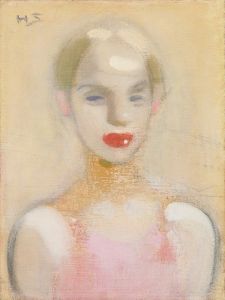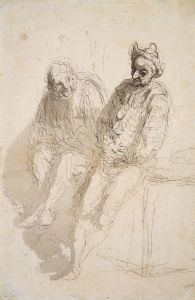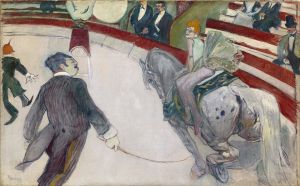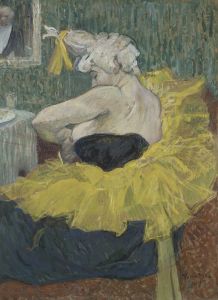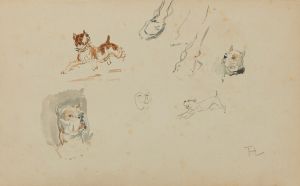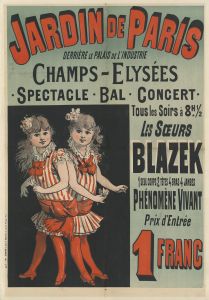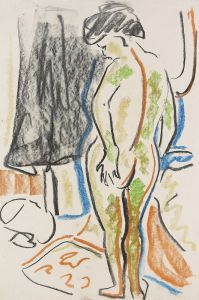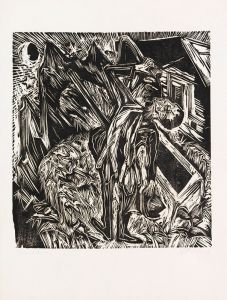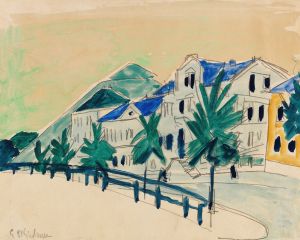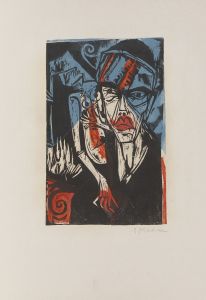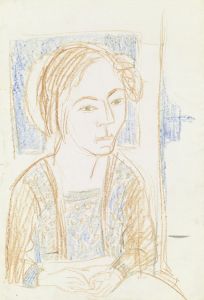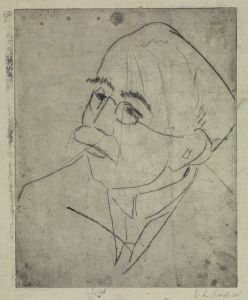
Acrobat on a Horse
A hand-painted replica of Ernst Ludwig Kirchner’s masterpiece Acrobat on a Horse, meticulously crafted by professional artists to capture the true essence of the original. Each piece is created with museum-quality canvas and rare mineral pigments, carefully painted by experienced artists with delicate brushstrokes and rich, layered colors to perfectly recreate the texture of the original artwork. Unlike machine-printed reproductions, this hand-painted version brings the painting to life, infused with the artist’s emotions and skill in every stroke. Whether for personal collection or home decoration, it instantly elevates the artistic atmosphere of any space.
"Acrobat on a Horse" is a painting by the German expressionist artist Ernst Ludwig Kirchner, created in 1914. Kirchner was a founding member of the influential artist group Die Brücke (The Bridge), which played a crucial role in the development of Expressionism in the early 20th century. The group sought to create a new artistic language that would bridge the past and the future, emphasizing raw emotion and a break from traditional artistic conventions.
The painting "Acrobat on a Horse" exemplifies Kirchner's dynamic and expressive style. It depicts a circus scene, a subject that Kirchner and his contemporaries often explored due to its vibrant and chaotic energy, which they found to be a rich source of inspiration. The composition features an acrobat performing on a horse, capturing the movement and excitement of the performance. Kirchner's use of bold colors and vigorous brushstrokes conveys a sense of immediacy and intensity, characteristic of his work during this period.
Kirchner's fascination with the circus can be traced back to his interest in capturing the essence of modern life and its various spectacles. The circus, with its blend of human and animal performers, offered a microcosm of the broader social dynamics and the interplay between nature and culture. In "Acrobat on a Horse," Kirchner's depiction of the acrobat and horse in motion reflects his interest in the human body's physicality and the expressive potential of movement.
The painting also reflects Kirchner's broader artistic concerns, including his interest in non-Western art forms and his desire to break free from the constraints of academic art. The simplified forms and exaggerated features of the figures in "Acrobat on a Horse" show the influence of African and Oceanic art, which Kirchner admired for its perceived authenticity and directness. This influence is evident in the stylized depiction of the acrobat and the horse, which are rendered with a sense of rhythm and vitality that transcends naturalistic representation.
"Acrobat on a Horse" was created during a tumultuous period in Kirchner's life. In 1914, the outbreak of World War I had a profound impact on the artist, leading to a period of intense productivity but also personal turmoil. The war and its aftermath would eventually lead to Kirchner's mental and physical decline, culminating in his tragic death in 1938. Despite these challenges, Kirchner's work from this period remains some of his most powerful and innovative, capturing the spirit of an era marked by rapid change and uncertainty.
Today, "Acrobat on a Horse" is recognized as an important work within Kirchner's oeuvre and within the broader context of German Expressionism. The painting is held in high regard for its dynamic composition, bold use of color, and its ability to convey the energy and emotion of the circus scene. It continues to be studied and appreciated for its contribution to the development of modern art and its reflection of the social and cultural currents of its time.





